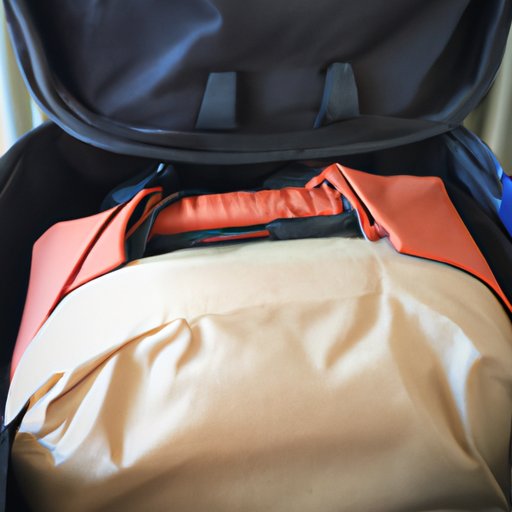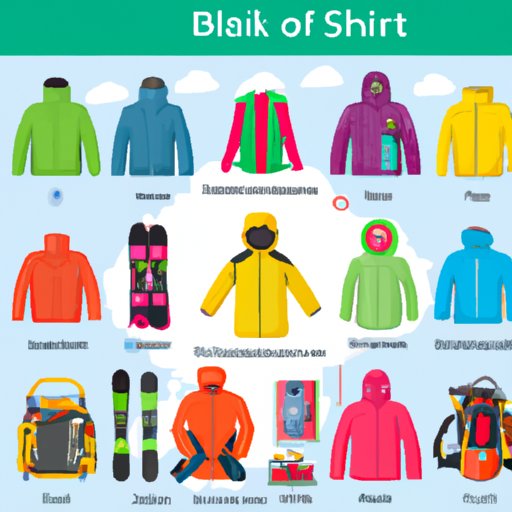Introduction
Going on a ski trip can be both thrilling and daunting. To ensure your ski trip is an enjoyable experience, proper planning and packing is key. This article provides helpful tips on how to pack for a ski trip, including what to bring, how to prepare for the weather, and how to choose the best luggage to store and protect your gear.
Research the Weather and Terrain
Before you start packing, it’s important to research the weather conditions and terrain of the ski resort. Knowing the temperature and type of terrain will help you determine the necessary items of clothing, accessories, and equipment you need to bring. According to a study by the University of Utah, “The average annual snowfall in the Wasatch Mountains is 500 inches. Mid-mountain temperatures range from 10°F (-12°C) to 40°F (4°C).” Additionally, the study found that “the most common terrain types are groomed runs, powder bowls, glades, and terrain parks.” Keeping these findings in mind, you can begin to build a packing list.
Make a List
When creating your packing list, consider what type of skiing or snowboarding you plan to do. If you’re a beginner, you may not need as much gear as an advanced skier or snowboarder would. Start by making a list of the items you need to bring:
- Ski Gear: skis, ski boots, ski poles, ski bindings, ski helmet, goggles, gloves/mittens, neck gaiter
- Clothes: base layer, mid-layer, outerwear, hat, sunglasses, ski socks
- Toiletries: sunscreen, lip balm, moisturizer, hand sanitizer, tissues
- Other Essentials: snacks, water bottle, first aid kit, phone charger
Select Lightweight, Waterproof Fabrics
Once you know what items to bring, start looking for lightweight, waterproof fabrics that will keep you warm and dry on the slopes. A few items to look for include:
- A waterproof jacket and pants
- Waterproof gloves and mittens
- A breathable base layer such as merino wool or synthetic materials like polyester and nylon
- A warm mid-layer such as fleece or wool
- A neck gaiter to keep your neck and face warm
Pack Layers of Clothing
Once you’ve gathered all the necessary items, start packing. It’s best to layer your clothing so you can adjust your temperature accordingly. For example, if you’re going on a sunny day, you can pack a light base layer and a mid-layer. On colder days, you might want to add an extra layer of insulation such as a fleece pullover or down jacket. It’s also a good idea to bring a spare pair of gloves or mittens in case your first pair gets wet.

Choose Quality Ski Bag or Duffel Bag
When it comes to storing and protecting your gear, choose a quality ski bag or duffel bag. Ski bags are designed specifically for skis and other ski gear, while duffel bags can be used for both ski gear and clothing. Look for a bag with several compartments for easy organization and accessibility. If you’re traveling with multiple people, consider getting a larger bag that can fit everyone’s gear.

Pack the Bag in Advance
It’s also a good idea to pack your bag in advance so you can make sure everything fits properly and you don’t forget any items. Once you’ve packed the bag, go through your list to make sure you’ve included everything. Add any forgotten items before you leave for your ski trip.
Conclusion
Planning and packing for a ski trip can be overwhelming, but with the right preparation and knowledge, you can easily make sure you have everything you need for a successful trip. Research the weather and terrain beforehand, create a list of necessary items, select lightweight, waterproof fabrics, and pack layers of clothing. Choose a quality ski bag or duffel bag to store and protect your gear, and pack the bag in advance. By following these tips, you’ll be well prepared for your ski trip.
(Note: Is this article not meeting your expectations? Do you have knowledge or insights to share? Unlock new opportunities and expand your reach by joining our authors team. Click Registration to join us and share your expertise with our readers.)
